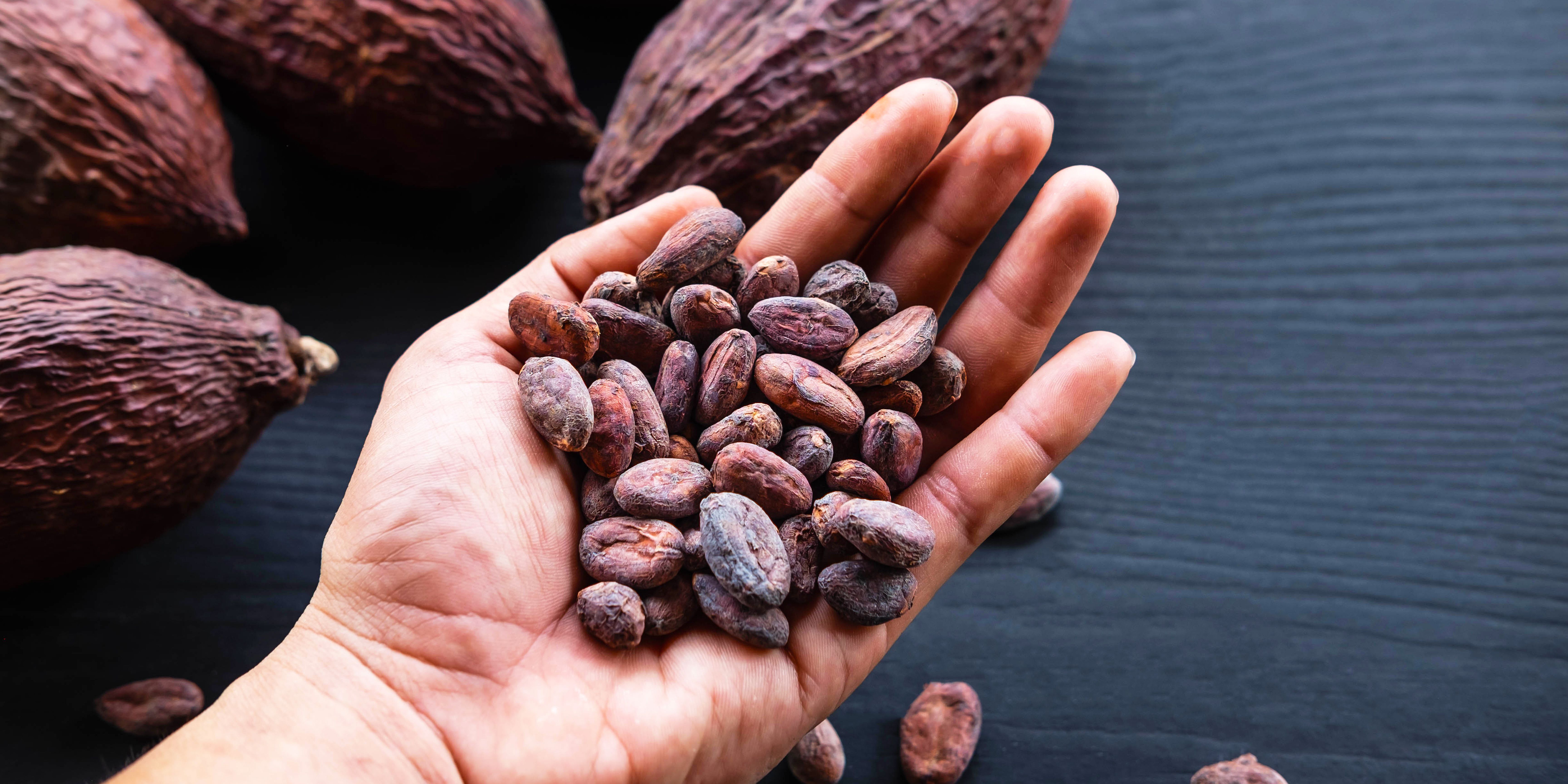Written by Alisa - 6 Minutes reading time
Sustainable cocoa: Industry leverages digital technology to target deforestation and labor issues

The global surge in demand for cocoa is straining producers who are struggling to meet the rising needs. The cocoa industry, under rising scrutiny for its environmental and social footprint, is undergoing transformative changes, which include technology-driven initiatives to track carbon fluctuations and agroforestry.
The advances comprise parallel targets to protect and support the farmer community while minimizing the use of environmentally harmful fertilizers and pesticides.
Food Ingredients First speaks to several companies on the progress toward making the cocoa sector more sustainable.
“For years, taste and price were the twin pillars holding sway over consumers’ grocery carts, but today, it’s becoming a three-legged stool, as the impact of values-based purchasing steadily climbs in importance,” Kate Clancy, group sustainability leader at Cargill Food and Bio, tells us.
“Over the last decade, Cargill has worked to improve farmer livelihoods, support children and families, build more resilient communities and preserve forest lands.”
“Yet, bringing transformative change to the cocoa sector requires strong partnerships with farmers, customers, governments, civil society and others.”
Diversifying farmer incomes and agroforestry
In response to environmental considerations, companies are proactively implementing strategies to mitigate deforestation and optimize pesticide utilization within the cocoa industry.
Clancy introduces: “In the last year alone, Cargill has collaborated with partners such as PUR to plant more than 1.4 million multi-purpose trees on cocoa farms.”
“As part of this effort, we introduced more than 16,000 new farmers to implement cocoa-agroforestry, as a way to support forest protection and restoration near essential conservation areas, while also diversifying farmer incomes through fruit and timber sales.”
Transitioning to broader conservation efforts, Barry Callebaut is also shifting its focus from carbon offsetting to insetting its carbon emissions through agroforestry and other decarbonization initiatives across company factories and value chains.
“We are focusing on improving planting material and productivity packages, including fertilizers, herbicides and pesticides. The combination of soil inputs and adequate pruning enables cocoa trees to produce more fruit, which can lead to an increase in quality and yield.” shares the company spokesperson.
In terms of pest management, Mars takes a new approach in collaboration with the University of California, Davis, in the US. “We are developing products and services to reduce the impacts of pests and disease in cocoa,” the company shares.
Through their research, the chocolate manufacturer and the institution developed the Cocoa Swollen Shoot Virus early detection kit to fight the highly destructive Cocoa Swollen Shoot virus in asymptomatic cocoa trees in collaboration with SwissDeCode.”
Tracking carbon fluctuations and deforestation
Embracing a technology-driven approach to sustainability, companies in the cocoa industry are actively investing in digital solutions to confront the challenges.
Andrew Brooks, head of Cocoa Sustainability, ofi, explains: “Research and investment into digital climate solutions are crucial to meet our sustainability goals.”
“We’ve partnered with NGIS to utilize Earth Engine and Google Cloud to develop a new AI-power Carbon Stock Monitoring and Measurement tool. We’re able to use the high-quality data needed to track carbon fluctuations across our global sourcing countries.”
At the same time, Ferrero is committed to achieving traceability back to the farm level in its cocoa supply chain. The company shares: “For cocoa, our company aims for traceability back to farm level and uses technology like SourceMap to monitor potential deforestation and ecosystem conversion in its supply chain.”
Cargill is also scaling its tech-driven monitoring approaches to farming: “Our work to protect forests includes the use of innovative GPS polygon technology and satellite data to see and quickly address possible deforestation risks and land use changes across farms.”
“To date, we have mapped 72% of the farmers in our direct supply chain, helping to protect forests today and for years to come,” Clancy details.
Reaching remote farming communities
Smallholder farmers primarily undertake cocoa production in remote equatorial regions, where the industry grapples with labor issues.
“Many cocoa farmers struggle to make a living income. Their main challenge is access to investments in their farms,” a spokesperson from Barry Callebaut highlights.
“This is why we shifted our focus from training to providing input support. Our support ranges from subsidized soil inputs to financial support for third-party labor services and additional premiums. Improving quality yield per hectare remains key to lift smallholder cocoa farmers out of poverty and put them on a trajectory toward a living income.”
Child labor has been found on cocoa farms in some West African communities. Mars, as a large purchaser of cocoa beans and products, tells us it is working with suppliers and certifiers to enhance child labor monitoring and remediation programs deployed in their Responsible Cocoa Today supply chain.
Some farmer communities in the region also need education on knowledge regarding good agricultural practices, aging farms, depleted soil and the unpredictable impacts of climate change.
Moreover, these areas often lack basic infrastructure and services, such as schools, access to safe water and healthcare.
Clancy elaborates on the sustainable projects launched by Cargill: “As part of our efforts to protect children and support local communities, we’ve invested to increase access to quality education.”
“We’ve also worked to eliminate other barriers, such as helping families secure birth certificates for their children, an important first step to accessing education,” she adds.
“We believe in adult education, too. Cargill equips farmers with the professional skills and financial support to strengthen their cooperatives and shape a brighter and more sustainable future for the sector.”
Cargill is actively involved in improving access to clean community water, partnering with the Global Water Challenge to finance and install water wells in many cocoa-growing communities.
Tapping into future market
Cocoa companies have been steadily expanding their production to serve cocoa and chocolate customers better worldwide while providing social and environmental protection for the next generation.
“Consumers today are increasingly mindful of how their food is produced. They’re also wary of companies that make bold sustainability claims without evidence to support them,” Brooks at ofi explains.
“Brands that can clearly demonstrate that they’re sourcing ingredients sustainably will be able to build greater levels of trust with consumers, employees and wider industry stakeholders.”
Cargill, meanwhile, is adopting innovative food solutions to provide sustainable cocoa products as the company expands its Asia-Pacific market.
“Earlier this month, at our cocoa processing plant in Gresik, Indonesia, we opened the Cargill Cocoa Development Center, which is the most advanced of its kind in Asia. As an advanced pilot production facility, the center enables speedier innovation through prototype development and product trials,” Clancy addresses.
“Together with our regional market insights, Aalst Chocolate plant and Chocolate Academy in Singapore, domestic chocolate manufacturing in India, four food innovation centers in Singapore, China and India, and our breadth of product portfolio from starches, sweeteners, texturizers, plant proteins, cocoa, chocolate and edible oils, we are well-positioned to help our customers innovate.”
“As we look ahead, we’ll continue to engage with all partners to advance solutions for emerging and cross-cutting issues. We’ll be working side-by-side with cocoa farmers and other partners, leveraging our collective strengths, and adopting sustainable practices to build a thriving, resilient cocoa sector benefiting generations to come,” she concludes.
